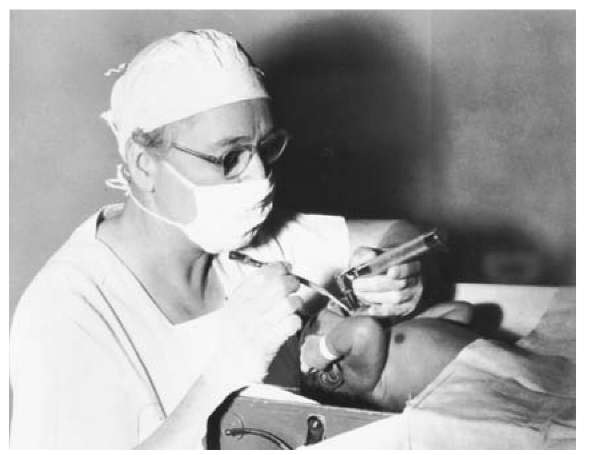Physician Virginia Apgar’s best-known contribution to the medical sciences was the development of a test designed to evaluate the health of a newborn. This breakthrough system helped save the lives of many infants and became a standard procedure in hospitals worldwide. Apgar made numerous other advances in obstetric anesthesia and raised the awareness Americans had regarding birth defects.
Born on June 7, 1909, in Westfield, New Jersey, Apgar was raised in a family environment that encouraged the love of music as well as science. Apgar’s mother was Helen Apgar and her father, Charles Apgar, was a businessman who had many hobbies, including astronomy and wireless telegraphy. Charles Apgar influenced his daughter to take an interest in science.
In the 1920s, Apgar entered Mount Holyoke College, where she was a very active student. Apgar not only waitressed and worked in the school library and other facilities to fund her tuition, but she also participated in numerous extracurricular activities, such as the college newspaper, orchestra, theater, and tennis. After graduating in 1929, Apgar entered medical school at Columbia University’s College of Physicians and Surgeons. She received her medical degree in 1933 and hoped to pursue a career in surgery. A professor encouraged Apgar to instead investigate anesthesiology, then a new field. Apgar became only the 50th physician to achieve certification in the new specialty.
After completing her education, Apgar took a teaching position at Columbia University’s medical school in 1936. Two years later, she became the director of the anesthesia division at Presbyterian Hospital. By 1949, Apgar had successfully built an anesthesiology department at the school, thereby lending the new field credibility, and was named full professor. In her research, Apgar concentrated on the effects of anesthesia during birth. She observed that newborn infants were generally taken directly to the hospital nursery with no examination—primary attention was given instead to the mothers. Because of the cursory treatment given to the newborns, health problems generally were not noticed until they became critical or fatal. Apgar thus developed a simple test, which came to be known as the Apgar Score System, that nurses could administer immediately after birth. Using a scale ranging from zero to two, the test evaluated the newborn’s skin color, muscle tone, breathing, heart rate, and reflexes. The resultant total score, known as the Apgar Score, indicated the physical condition of the infant. A low score was indicative of problems requiring immediate attention, while a high score signified a healthy baby. Apgar first introduced the system in 1952 and published it in 1953.
Virginia Apgar developed the Apgar Score System, a series of quick tests used in hospitals around the world to determine a newborn’s health.
After many years researching obstetric anesthesia and working as a physician, Apgar returned to school, earning a master’s degree in public health from Johns Hopkins University in 1959. Also that year Apgar became a senior executive with the charitable organization National Foundation—March of Dimes. Apgar’s job was to raise funds to support research on birth defects and to increase public support and awareness. In 1967, Apgar became the director of the organization’s research department.
In addition to her pioneering work related to the Apgar Score System, Apgar also conducted research on neonatal acid-base status and introduced the anterior approach to the stellate ganglion. Among the many honors Apgar received were the Blackwell Citation from the New York Infirmary in 1960, the Distinguished Service Award of the American Society of Anesthesiologists in 1961, and the Gold Medal for Distinguished Achievement in Medicine, awarded in 1973 by Columbia University’s College of Physicians and Surgeons. Apgar was also named Woman of the Year in science by Ladies’ Home Journal in 1973 and was honored with a U.S. stamp in her name in 1994. Apgar died from liver disease at the age of 65 in 1974.

